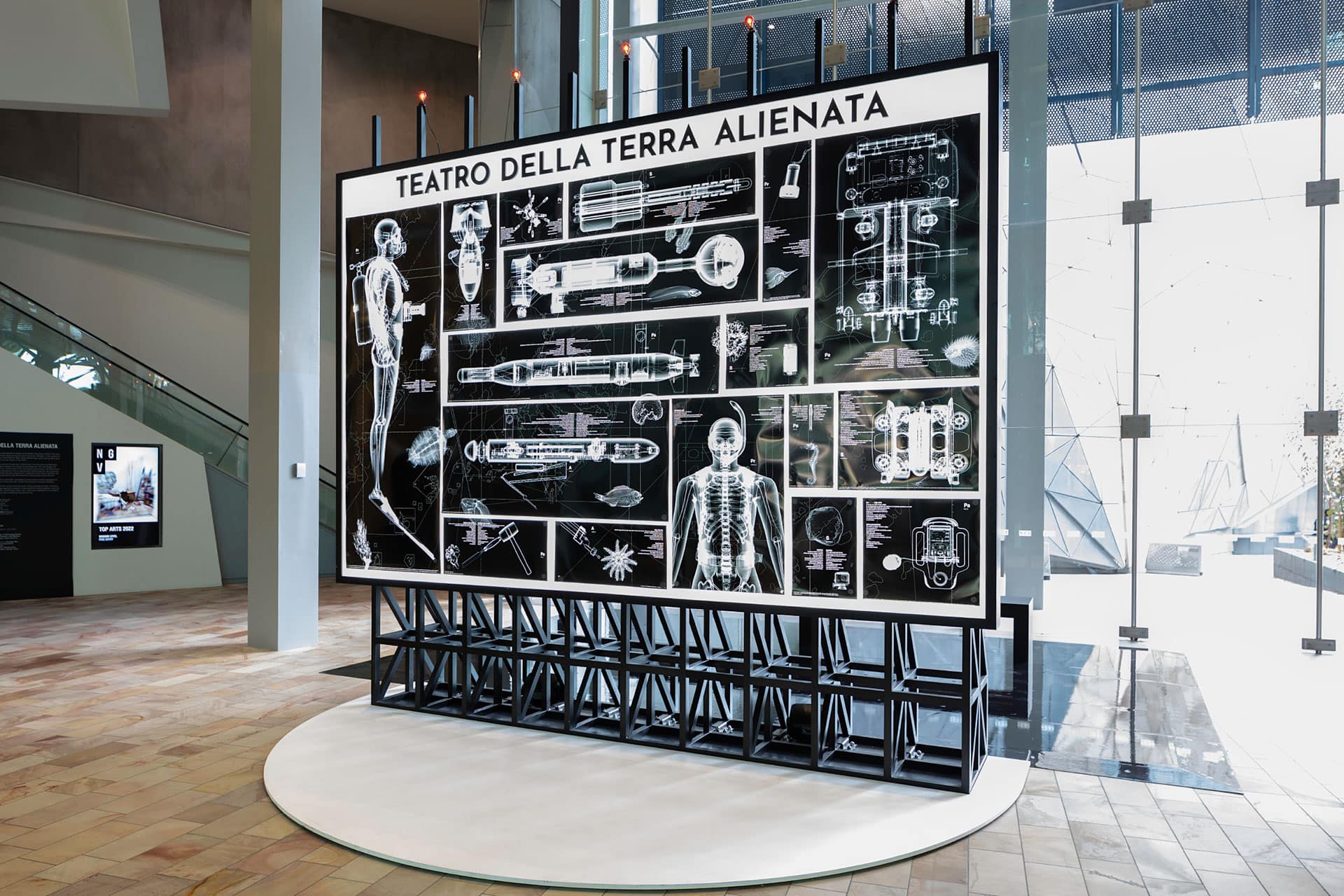Teatro Della Terra Alienata
Free entry
The Ian Potter Centre: NGV Australia, Fed Square
Ground Level
1 May 22 – 4 Sep 22
Teatro Della Terra Alienata represented Australia at the Milano Triennale in 2019. The work explores the interplay between political actions and economic interests, in the context of the mass bleaching of the Great Barrier Reef. Mass bleaching events during 2016 and 2017 made plausible the eventual death of the Reef.
The project is inspired by Laboria Cuboniks’s 2018 book The Xenofeminst Manifesto. Cubonik posits that injustice should not simply be accepted as ‘the way things are’ and offers a radical new form of feminism fit for the twenty-first century. ‘Xenofeminism’ seeks to uproot forces of repression and re-appropriate technology for new purposes. In this work, Teatro Della Terra Alienata explores an imagined future where the Reef has been taken over and is protected by the Xenofeminist International Corporation®.
In this imaged future, existing scientific surveillance and environmental management structures are be repurposed to save the reef, rather than benefit corporate interests.
The work also draws attention to the historical roots of this ecological crisis, including colonial and capitalistic approaches to nature. It asks whether invasive species, such as the crown-of-thorns starfish (Acanthaster planci sp.), bear any culpability in a scenario where their ecosystem has been altered by human activity.
The project consolidates five years of research and reflects upon conversations and testimonies of scientists, activists, Aboriginal elders, miners, designers and thinkers. It was produced in collaboration with six complicit artists (Cigdem Aydemir, Liam Benson, Madison Bycroft, Shoufay Derz, Janet Laurence and Patricia Reed).
Based in Sydney since 2015, the architectural collective GRANDEZA/BAJEZA works across teaching, academic research and spatial practice. Their work critically interrogates the (in)capacity of architecture and cognitive institutions to respond to contemporary environmental, social and cultural challenges.
The work has recently been acquired by the NGV for its Contemporary Design and Architecture Collection.
